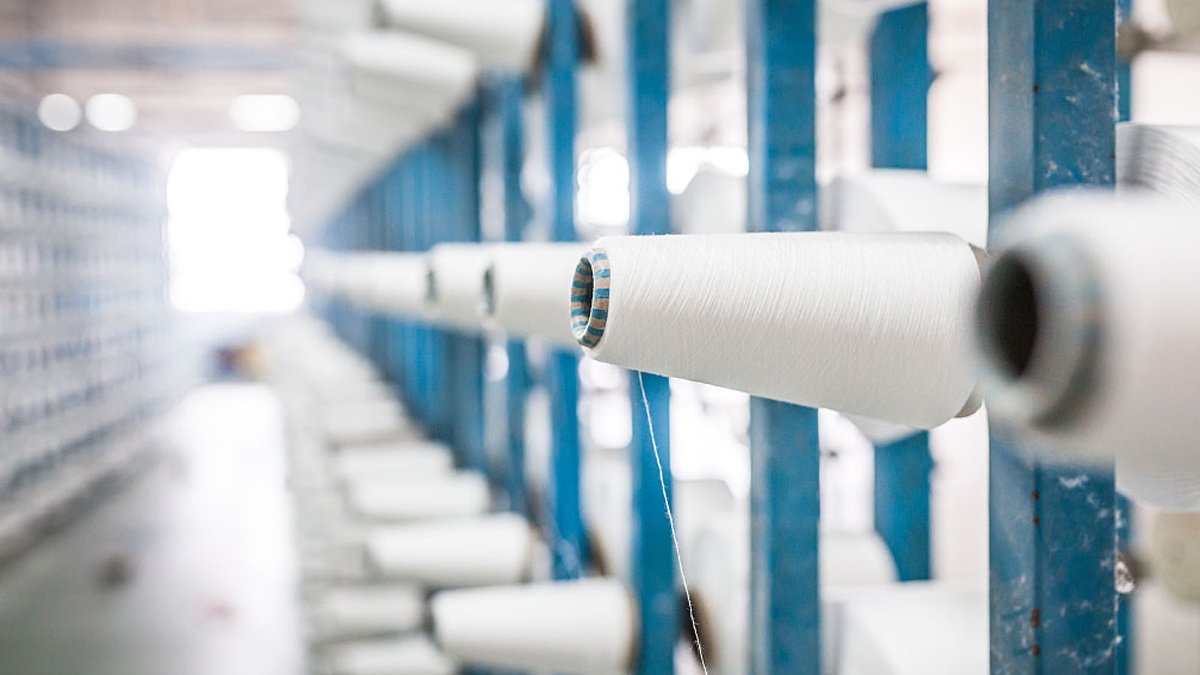Titanium dioxide (TiO₂) is widely used in the chemical fiber industry as a delustrant, improving the appearance and functionality of synthetic fibers. Depending on the fiber type, different grades and specifications of TiO₂, such as fiber grade TiO₂, are required. For example, fiber grade TiO₂ is essential for certain types of fibers. Key factors for fiber grade tio2 include crystal structure, particle size, dispersion, thermal stability, and surface treatment.
1. Polyester Staple Fiber (PET Staple)
Anatase-grade TiO₂ is typically used due to its excellent dispersibility and soft tone. The ideal particle size ranges from 0.2–0.3 μm, offering effective delustering without compromising fiber strength. High whiteness (≥95), strong thermal stability (300°C+), and advanced organic/inorganic surface treatment are essential.
2. Polyester Filament Yarn (PET Filament)
Requires narrower particle size distribution and even higher dispersion to prevent clogging of spinnerets and ensure smooth processing. Stability against yellowing and thermal degradation is crucial, given the continuous spinning conditions.
3. Nylon (Polyamide, PA)
While anatase is preferred, some applications may use treated rutile TiO₂. The powder must be finely dispersed to avoid agglomeration and ensure uniform coloration. Special surface coatings help resist discoloration due to the moisture-sensitive nature of nylon.
4. Polypropylene Fiber (PP Fiber)
Used in nonwoven and industrial fabrics, PP fibers require slightly larger TiO₂ particles (~0.3 μm) for better opacity. The TiO₂ must be highly weather- and heat-resistant due to PP’s outdoor applications. A hydrophobic surface treatment enhances compatibility with PP’s low polarity.
5. Spandex (Elastane)
TiO₂ is used minimally in spandex. If used, the pigment must have ultra-fine particle size and very mild surface chemistry to avoid affecting elasticity or chemical stability of the fiber.
6. Viscose Rayon
Being water-based in processing, TiO₂ used in viscose must disperse well in aqueous systems. Moderate particle size and soft surface treatments ensure good performance without impacting fiber integrity.
Conclusion
Choosing the right type of TiO₂ is critical in synthetic fiber production. Each fiber type places different demands on particle size, dispersion, and chemical behavior. With the growing performance requirements of modern textiles, fiber-grade TiO₂ will continue to evolve toward higher purity, better processing compatibility, and specialized functionality.
Types and Requirements of TiO₂ for Chemical Fibers
| Fiber Type | TiO₂ Type | Particle Size (μm) | Key Requirements |
|---|---|---|---|
| Polyester Staple | Anatase | 0.2–0.3 | Good dispersibility, high whiteness, strong thermal stability |
| Polyester Filament | Anatase | 0.2–0.25 | Narrow size distribution, superior dispersion, anti-yellowing |
| Nylon (Polyamide) | Anatase / Rutile | 0.2–0.3 | Excellent dispersion, moisture discoloration resistance, soft surface coating |
| Polypropylene Fiber | Rutile | 0.25–0.35 | Good weather resistance, heat stability, hydrophobic surface |
| Spandex (Elastane) | Anatase | <0.2 | Ultrafine particles, low chemical activity, preserves elasticity |
| Viscose Rayon | Anatase | 0.2–0.3 | Water dispersibility, safe surface treatment, good compatibility |
Key Takeaways
- Titanium dioxide (TiO₂) improves synthetic fiber quality, requiring specific grades like fiber grade tio2.
- Different fiber types, such as polyester and nylon, have unique TiO₂ requirements related to particle size and stability.
- Selecting the correct TiO₂ type is critical for meeting performance standards in various textile applications.
- Key factors in choosing fiber grade tio2 include dispersion, thermal stability, and surface treatment features.
- The use of fiber grade tio2 will adapt to the evolving demands of modern textiles, focusing on purity and compatibility.




Impact of high TiO2[1.8%] on high tenacity polyester staple fiber at room temperature after a long period on %Elongation